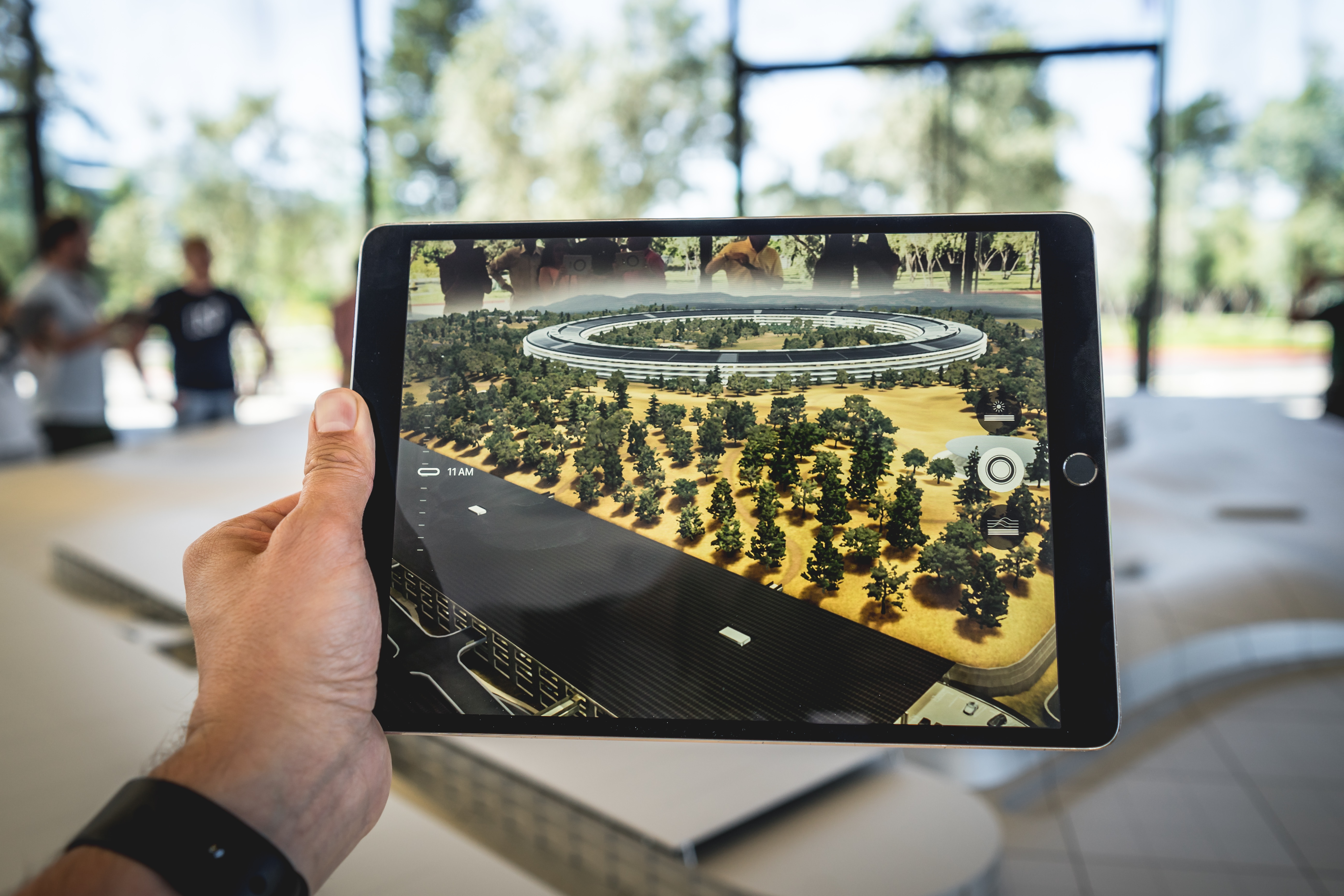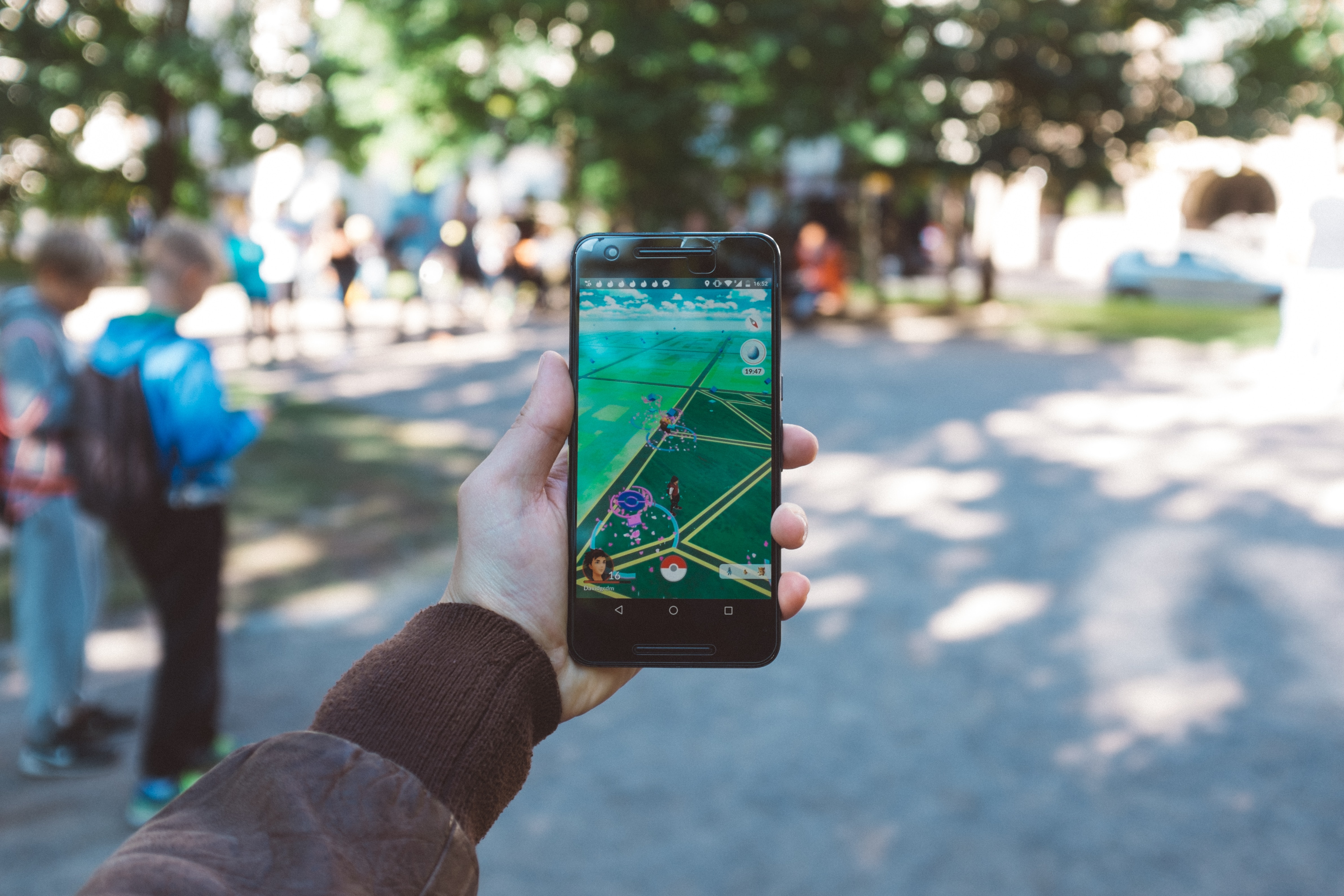Augmented reality (or AR) is, according to The Concise Fintech Compendium, „an enhanced version of the physical, real-world reality of which elements are superimposed by computer-generated or extracted real-world sensory input, such as sound, video, graphics or haptics.” Augmented reality combines real scenes and computer-generated images and delivers an interactive experience, an enhanced, unified view of the world.
Augmented reality in today’s world

AR is a hot topic at the moment, but it started to some extent in 1957. The first application of augmented reality was Sensorama, a mechanical device which delivered images, sounds, vibration, and smell for the viewer. At that time it was not controlled by a computer. According to the Interaction Design Foundation, the first properly functioning AR was developed in 1992 by Louis Rosenberg at USAF Armstrong’s Research Lab. AR makes it look like the boundaries between reality and science fiction are decreasing.
AR has possible applications in archaeology, architecture, STEM education, Commerce, literature, visual arts, etc. Augmented reality can be experienced through your mobile device, computer or special glasses (for example Google Glasses).
Augmented reality in e-commerce
AR might be the next revolution in e-commerce. Given the recent increase of smartphone usage among consumers, AR is one of the tools that can establish a strong presence on the tech market.
The way we shop has evolved, retailers are making efforts to bring the digital experience in stores. Also, consumers like a more personalized approach from the online stores they choose to shop at.
The question is: „How can augmented reality help e-commerce?”. There are plenty of AR applications in e-commerce; we have selected the top 3 most important:
1. Enhance the shopping experience
Customers enjoy an interactive online shopping session and augmented reality provides it. Some customers like to try on different products, and, above all, augmented reality apps offer this experience. With the help of AR apps, customers can try on clothes, sunglasses, accessories, makeup. They can test to see how different colors work together, what clothes combinations suit well, what eyeglass shape fits best, etc.
2. Personalization
Augmented reality apps help the customer personalize different products and see the result before buying. For example, shoppers can personalize clothes or gift objects to know for sure if they like it and want to buy it.
3. Visualize your purchases

Customers can see how a product will look like in their environment, with the help of augmented reality. For example, if somebody wants to buy furniture and wants to see how it will fit with what they already have, AR helps. The app shows the room through the camera and the new piece of furniture in the place where the customer wants to position it.
The benefits of using augmented reality in e-commerce:
- AR imitates in online the real in-store experience
- Customers can explore the product’s features before buying
- AR eliminates doubts that come with online shopping
- Customers can modify and preview the products
- AR sparks the customers’ curiosity and tells a story
- The engagement between the customers and the business increases
- Businesses who use AR are one step ahead of the ones who do not
- Younger customers are attracted to the AR, mainly because of its’ interactive component
- Customers can do tailored shopping
- AR-powered digital marketing is getting more popular among consumers
Why should you use augmented reality if you have an e-commerce business?
Let’s take a look at the benefits of AR. Imitating the in-store experience from the at-home comfort appeals, especially to those that want to buy, but lack the time. The ability to explore the product’s features before buying leads to more accurate decisions and removes the uncertainty that comes with online shopping. When the doubt disappears from the customers’ minds, the return rate of products decreases. We know that when people buy something in-store, they are less likely to return it. As a result, AR creates the same situation for e-commerce. Also, the customers feel like they have a trial free of risk.
Personalization is an essential feature that comes with AR e-commerce. People enjoy custom products because they fit specific needs. In this case, customization allows the customers to modify some product specifications to see if they like it better. Seems like some of the most popular AR apps in fashion and beauty help customers decide. They can see how clothes fit, how different colors of makeup look on them, and how to take care of their skin according to their needs.
AR apps
When customers use AR apps, they engage with businesses on a more personal level. They spend more time getting familiar with the business’ products and interacting with its features. As a result, this experience can place that business at the top of the customer’s preferences. Also, AR helps with brand awareness.
Augmented reality is still not very common among e-commerce retailers, so those who already use it have an advantage by default. Also, younger customers tend to be attracted by business who use AR. We have an interesting article about millennials and online shopping habits, check it out!

Augmented reality-powered digital marketing
Social media marketing is an essential tool for e-commerce companies nowadays. AR opens more opportunities to differentiate from competitors. There are plenty of AR campaigns that had huge success. For example:
The research towards developing augmented reality is still going on. E-commerce companies continue to adapt to be able to offer an enhanced shopping experience for the customers that do not want to go to physical shops. AR focuses on better customer satisfaction, which leads to increased sales. From a business point of view, AR leads to better revenues and conversion rates. Considering this, we can imagine that the future of e-commerce will involve augmented reality.
